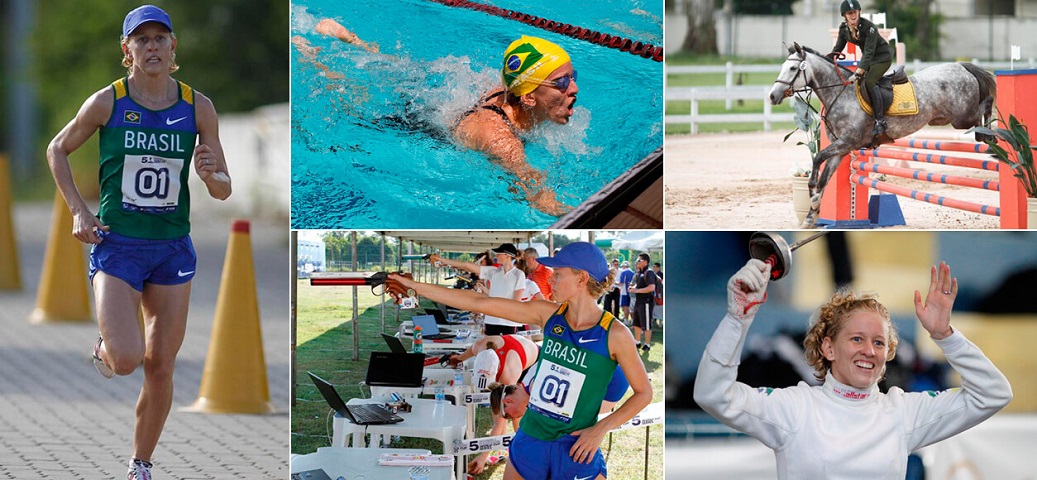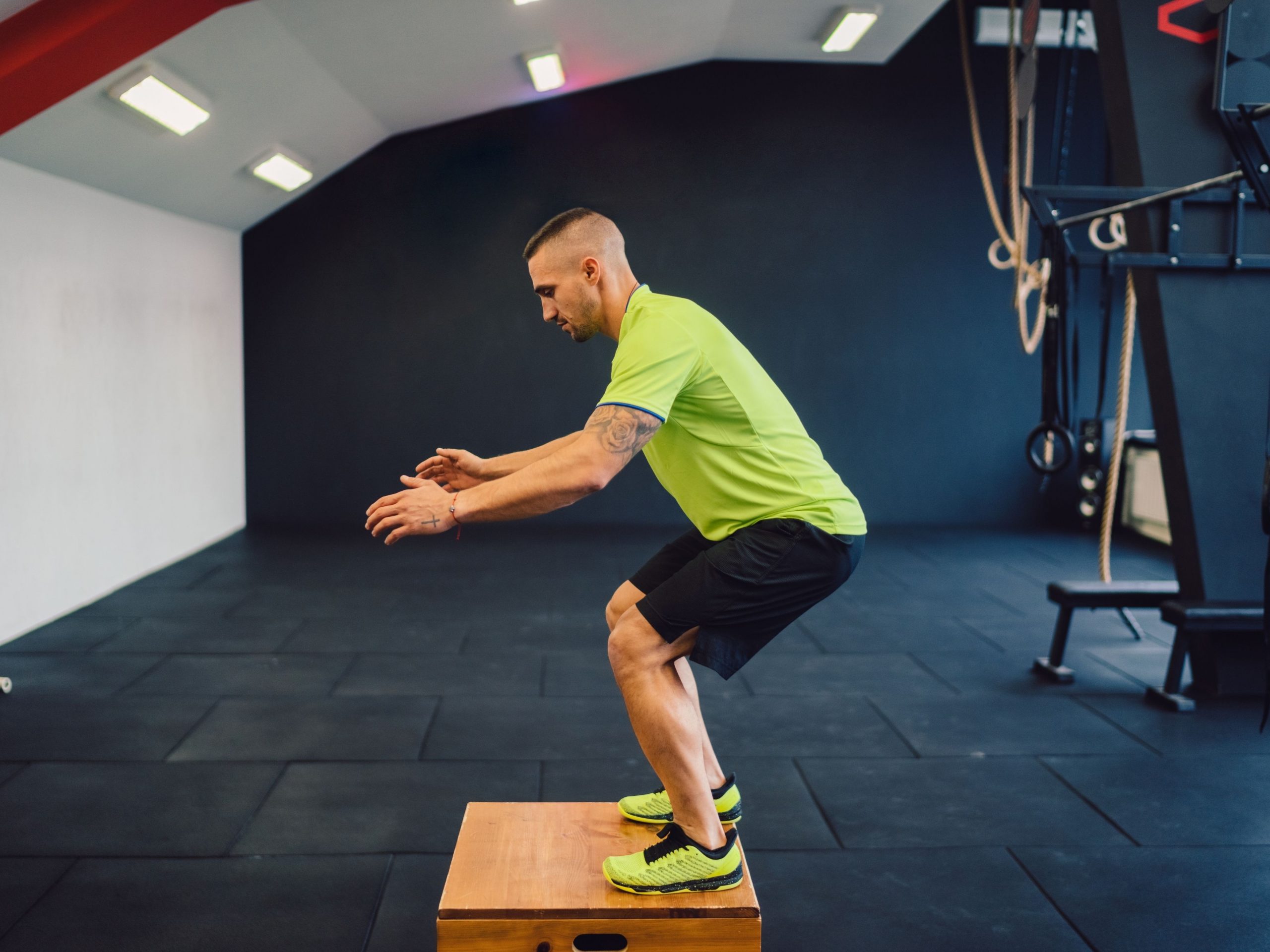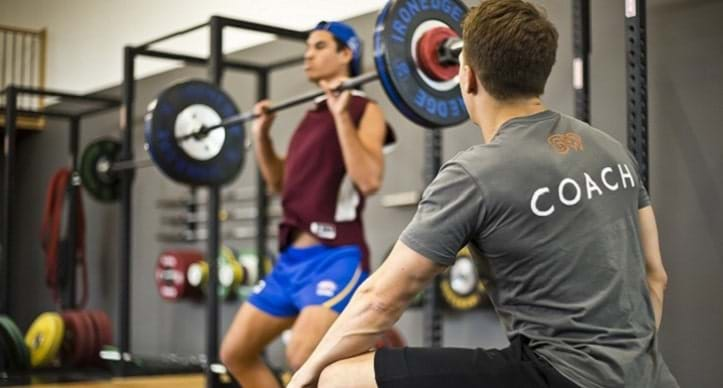The Role of Strength and Conditioning in Pentathlon Success
Strength and conditioning play a pivotal role in the success of pentathletes. Proper training in this area can significantly enhance power, endurance, and overall athleticism. By incorporating a well-designed strength and conditioning program, pentathletes can reduce the risk of injury, increase agility, and improve mental focus. These factors collectively contribute to improved performance in all five pentathlon events: swimming, fencing, horse riding, running, and shooting.

Understanding the Unique Demands of Pentathlon Events
Pentathlon events encompass a wide range of physical requirements, necessitating a versatile and adaptable approach to strength and conditioning. Swimming demands strong upper body power and endurance, while fencing requires quick lower body movements, core stability, and explosive strength. Horse riding calls for balance, coordination, and mental focus, and running places a premium on cardiovascular endurance and leg strength. Lastly, shooting necessitates a calm and steady hand, often following intense physical exertion.
To address the unique demands of each discipline, strength and conditioning programs for pentathletes should incorporate exercises that target the specific muscle groups and energy systems required for each event. For instance, swimmers may benefit from exercises that strengthen the shoulders, chest, and back, while incorporating high-repetition, low-rest sets to build muscular endurance. Fencers, on the other hand, may focus on lower body power and agility, with exercises such as box jumps, lateral bounds, and single-leg squats. Horse riders can benefit from exercises that improve balance and core stability, such as single-arm or single-leg deadlifts, and plank variations. Runners require a strong aerobic base, which can be developed through long-distance runs, interval training, and tempo runs. Finally, shooters may benefit from exercises that improve grip strength and stability, such as farmer’s walks and plate pinches.

Designing a Personalized Strength and Conditioning Program
A successful strength and conditioning program for pentathletes should be tailored to the individual athlete’s strengths, weaknesses, and goals. This requires a personalized approach that considers the unique demands of each pentathlon event, as well as the athlete’s training history, injury status, and personal preferences. By individualizing the program, athletes can optimize their training time, reduce the risk of injury, and maximize their potential for success.
Key elements of a personalized strength and conditioning program for pentathletes include periodization, exercise selection, and progression. Periodization refers to the systematic planning of training phases, with the goal of peaking for competition. This may involve periods of high volume and low intensity, followed by periods of low volume and high intensity. Exercise selection should be based on the specific needs of each event, as well as the athlete’s individual strengths and weaknesses. For example, a pentathlete with a strong background in swimming may benefit from a program that emphasizes upper body strength and endurance, while a pentathlete with a background in running may require a program that focuses on lower body power and agility.
Progression is another critical component of a personalized strength and conditioning program. This involves gradually increasing the volume, intensity, or complexity of exercises over time, with the goal of continually challenging the athlete and promoting adaptation. Progression may be achieved through a variety of means, such as increasing the weight, reps, or sets for strength exercises, or increasing the speed, distance, or duration for conditioning exercises. By incorporating progression into the training program, athletes can continually improve their fitness and performance, while also reducing the risk of plateaus and overtraining.
In addition to periodization, exercise selection, and progression, a personalized strength and conditioning program for pentathletes should also include regular assessments and adjustments. This may involve periodic performance tests, training logs, and subjective evaluations, all of which can provide valuable feedback on the athlete’s progress and help inform future training decisions. By tracking progress and adjusting the program based on the athlete’s performance and feedback, coaches and athletes can ensure that the training program remains effective and aligned with the athlete’s goals.
Incorporating Functional Training for Pentathletes
Functional training exercises are an essential component of a well-rounded strength and conditioning program for pentathletes. These exercises are designed to improve athletic performance and reduce the risk of injury by targeting the specific movements and demands of each pentathlon event. By incorporating functional training into their training plan, pentathletes can enhance their power, endurance, and overall athleticism, while also improving their technique and skill.
Functional training exercises for pentathletes may include plyometrics, Olympic lifts, and core stability work. Plyometrics involve explosive movements that help to improve power, speed, and agility. Examples of plyometric exercises suitable for pentathletes include box jumps, depth jumps, and lateral bounds. These exercises can help to improve explosive power in running and jumping events, as well as quickness and agility in fencing and horse riding.
Olympic lifts, such as the snatch and clean and jerk, are another type of functional training exercise that can be beneficial for pentathletes. These exercises involve lifting a barbell from the ground to overhead in one or two movements, requiring explosive power, coordination, and balance. By incorporating Olympic lifts into their training program, pentathletes can improve their upper body strength, power, and explosiveness, as well as their overall athleticism. Examples of Olympic lifts suitable for pentathletes include power cleans, hang cleans, and push presses.
Core stability work is also an essential component of functional training for pentathletes. A strong and stable core can help to improve posture, balance, and stability, as well as reduce the risk of injury. Examples of core stability exercises suitable for pentathletes include planks, Russian twists, and bicycle crunches. These exercises can help to improve core strength and stability, as well as overall athleticism and performance.
When incorporating functional training exercises into their strength and conditioning program, pentathletes should focus on proper form and technique. This is particularly important for plyometric and Olympic lift exercises, which can be high-impact and require a high degree of skill and coordination. By prioritizing proper form and technique, athletes can reduce the risk of injury and maximize the benefits of functional training.

Strength Training for Pentathletes: Techniques and Principles
Strength training is a crucial component of any successful pentathlon training program. By incorporating strength training exercises into their routine, pentathletes can enhance their power, endurance, and overall athleticism, while also reducing the risk of injury. When designing a strength training program for pentathletes, it is essential to consider the principles of effective strength training, including proper form, progressive overload, and exercise variety.
Proper form is essential for any strength training exercise. By using correct form, athletes can ensure that they are targeting the intended muscle groups and reducing the risk of injury. This is particularly important for complex exercises, such as Olympic lifts, which require a high degree of skill and coordination. When performing strength training exercises, athletes should focus on maintaining proper form throughout the entire range of motion, and avoid using momentum or excessive weight to complete the movement.
Progressive overload is another key principle of effective strength training. By gradually increasing the volume, intensity, or frequency of their workouts, athletes can continue to challenge their muscles and promote growth and strength gains. This can be achieved through a variety of methods, including increasing the weight used for each exercise, performing additional sets or reps, or reducing rest periods between sets. By incorporating progressive overload into their strength training program, athletes can ensure that they are continually making progress and avoiding plateaus.
Exercise variety is also important for a well-rounded strength training program. By incorporating a variety of exercises that target different muscle groups and movement patterns, athletes can ensure that they are developing balanced strength and reducing the risk of overuse injuries. Examples of exercises suitable for pentathletes include squats, deadlifts, lunges, bench presses, pull-ups, and rows. These exercises can be modified or progressed based on an athlete’s experience level and event-specific demands.
When designing a strength training program for pentathletes, it is essential to consider the athlete’s experience level and event-specific demands. For example, athletes who excel in running events may benefit from a strength training program that emphasizes lower body power and endurance, while athletes who excel in fencing or horse riding may benefit from a program that emphasizes upper body strength and stability. By individualizing the strength training program based on an athlete’s strengths, weaknesses, and goals, coaches can help to optimize performance and reduce the risk of injury.

Conditioning for Pentathletes: Enhancing Endurance and Agility
Conditioning is a vital component of any strength and conditioning program for pentathletes. By incorporating conditioning exercises into their training routine, athletes can improve their endurance, agility, and overall athleticism, which can translate to better performance in pentathlon events. There are various conditioning methods that athletes can use to achieve these goals, including interval training, circuit training, and tempo runs.
Interval training involves alternating between periods of high-intensity exercise and low-intensity recovery. This type of training can be highly effective for improving cardiovascular endurance and anaerobic capacity, which are essential for pentathlon events such as swimming, fencing, and running. For example, athletes may perform a series of 400-meter sprints, followed by a period of active recovery, such as walking or jogging. This type of training can be modified based on an athlete’s experience level and event-specific demands, with the intensity and duration of the intervals adjusted accordingly.
Circuit training is another effective conditioning method for pentathletes. This type of training involves performing a series of exercises in rapid succession, with minimal rest between sets. Circuit training can be used to improve muscular endurance, strength, and agility, all of which are important for pentathlon events. For example, athletes may perform a circuit that includes exercises such as squats, lunges, push-ups, and burpees, with each exercise performed for a set number of repetitions or a specific time interval.
Tempo runs are a type of conditioning exercise that involves running at a steady pace for a set distance or time interval. This type of training can be used to improve aerobic endurance, which is essential for pentathlon events such as running and swimming. Tempo runs can be modified based on an athlete’s experience level and event-specific demands, with the distance, duration, and intensity of the runs adjusted accordingly. For example, athletes may perform tempo runs at a moderate intensity for 20-30 minutes, or at a higher intensity for shorter periods of time.
When incorporating conditioning exercises into a pentathlete’s training plan, it is essential to consider the athlete’s experience level and event-specific demands. For example, athletes who excel in running events may benefit from a conditioning program that emphasizes aerobic endurance and speed, while athletes who excel in fencing or horse riding may benefit from a program that emphasizes agility and explosive power. By individualizing the conditioning program based on an athlete’s strengths, weaknesses, and goals, coaches can help to optimize performance and reduce the risk of injury.
Balancing Strength and Conditioning with Skill Development
One of the biggest challenges in strength and conditioning for pentathletes is finding the right balance between physical preparation and skill development. While it is essential to build a solid foundation of strength, endurance, and agility, athletes must also dedicate time and energy to refining their technique and mastering the specific skills required for each pentathlon event.
To achieve this balance, coaches and athletes should work together to develop a comprehensive training plan that integrates physical preparation with skill development. This may involve scheduling separate training sessions for strength and conditioning and skill work, or combining the two in a way that allows athletes to work on both simultaneously.
For example, athletes may perform strength exercises that target specific muscle groups used in pentathlon events, such as squats and lunges for running or deadlifts for horse riding. By focusing on exercises that have a direct transfer to the athlete’s sport, coaches can help to optimize performance and reduce the risk of injury.
In addition to strength and conditioning exercises, athletes can also incorporate skill drills and practice sessions into their training plan. These sessions should focus on refining technique, building muscle memory, and improving reaction time. For example, athletes may practice fencing drills that focus on footwork, bladework, or strategy, or swimming drills that target specific stroke mechanics.
To ensure that athletes are getting the most out of their training, it is essential to prioritize recovery and cross-training. This may involve incorporating rest days into the training schedule, engaging in low-impact activities such as yoga or pilates, or using techniques such as foam rolling or massage to promote muscle recovery and reduce soreness.
By finding the right balance between strength and conditioning and skill development, coaches and athletes can help to optimize performance and achieve success in pentathlon events. By individualizing the training plan based on an athlete’s strengths, weaknesses, and goals, coaches can help to ensure that athletes are making progress towards their objectives and staying injury-free.

Monitoring Progress and Adjusting Training Programs
Strength and conditioning for pentathletes is an ongoing process that requires consistent monitoring and adjustment. By tracking progress and providing regular feedback, athletes and coaches can ensure that the training program remains effective and aligned with the athlete’s goals. Various methods can be employed to assess improvement, including performance tests, training logs, and subjective evaluations.
Performance tests offer objective data on an athlete’s progress in specific areas, such as strength, power, or endurance. These tests can be conducted at regular intervals, such as every 6-8 weeks, to evaluate changes in performance and identify areas for improvement. Examples of performance tests include 1-rep max lifts, vertical jump tests, and timed runs.
Training logs serve as a valuable tool for monitoring progress and identifying trends over time. By recording exercise selection, volume, and intensity, athletes and coaches can track improvements in strength, power, and endurance. Additionally, training logs can help identify periods of stagnation or regression, allowing for timely adjustments to the training program.
Subjective evaluations, such as self-assessments or coach observations, can provide valuable insights into an athlete’s progress and overall well-being. These evaluations may include assessments of energy levels, motivation, and mental focus, as well as subjective ratings of pain or discomfort. By incorporating subjective evaluations into the monitoring process, athletes and coaches can gain a more holistic understanding of the athlete’s progress and make informed decisions regarding training adjustments.
When assessing an athlete’s progress, it is essential to consider both short-term and long-term goals. Short-term goals, such as improving strength or power in specific exercises, can provide immediate feedback and motivation. Long-term goals, such as achieving a personal best in a pentathlon event, require a more comprehensive approach to monitoring and adjustment, incorporating various methods of assessment and regular communication between athletes and coaches.
Ultimately, the success of a strength and conditioning program for pentathletes depends on the athlete’s ability to adapt and progress over time. By consistently monitoring progress and adjusting training programs based on objective and subjective data, athletes and coaches can optimize performance and increase the likelihood of achieving long-term success in pentathlon competition.


